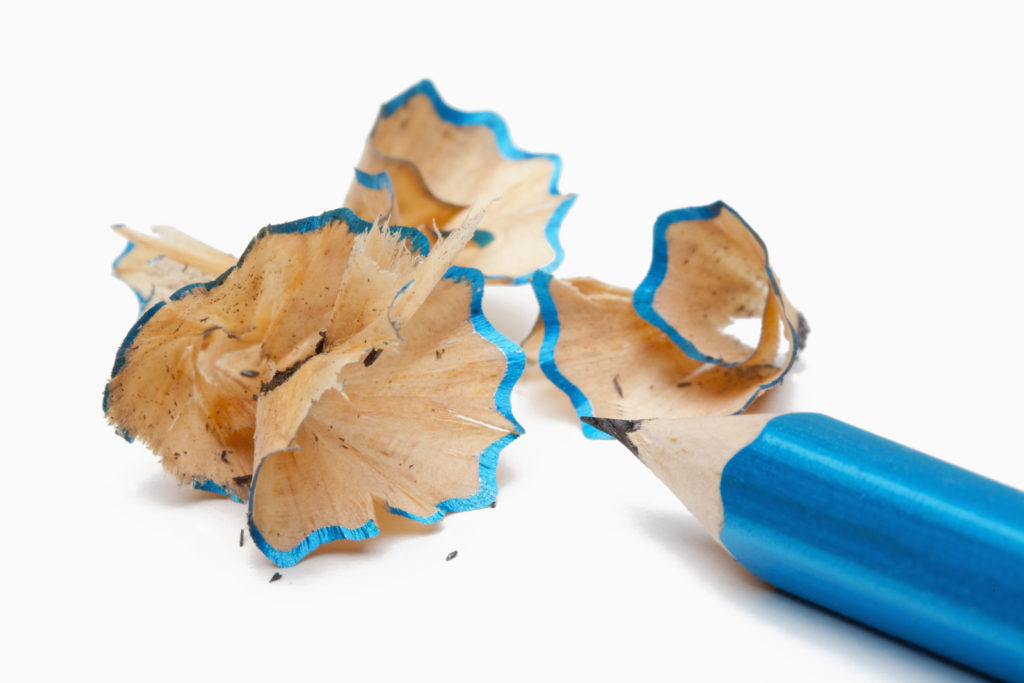When we sharpen our pencils, we generate those small bits of pencil shavings that usually then get dumped in the trash. Pencils are largely made of wood, which we know is recyclable. So, can you compost pencil shavings? Let’s take a look!
Can you Compost Pencil Shavings?
Yes, pencil shavings can be composted. Pencil shavings are typically made of wood, which is an organic material that can break down and decompose in a composting environment. Composting pencil shavings not only diverts them from the waste stream but also contributes to creating nutrient-rich compost for your plants and gardens.
Benefits of Composting Pencil Shavings:
Composting pencil shavings offers several benefits to both your compost pile and the environment:
1. Organic Carbon Source: Pencil shavings are composed of wood, which is rich in carbon, making pencil shavings a brown material. Adding pencil shavings to your compost pile provides a valuable carbon source, balancing the nitrogen-rich materials and helping to maintain an optimal carbon-to-nitrogen ratio in the compost. This balance is crucial for efficient decomposition and the production of nutrient-rich compost.
2. Waste Reduction: By composting pencil shavings, you are reducing the amount of waste that would otherwise end up in landfills. Instead of discarding them, composting allows pencil shavings to be transformed into a beneficial resource that can be utilized to nourish the soil and support plant growth.
Considerations for Composting Pencil Shavings
You can compost pencil shavings, but there are a few things to keep in mind:
1. Wood Type: Pencil shavings are typically made from different types of wood, and some woods may decompose faster than others. Generally, softer woods such as cedar or pine will break down more quickly compared to harder woods like oak or maple. If possible, try to compost pencil shavings made from softer woods for faster decomposition. In any case, it may take a while for the shavings to break down in your compost.
2. Quantity and Mixing: Pencil shavings should be added to the compost pile in moderation. For most of us, this isn’t a problem. But, if you’re a teacher with a lot of pencil shavings, you may want to add them in smaller amounts. They should be mixed with nitrogen-rich green materials, such as kitchen scraps, leaves, or grass clippings, to ensure a balanced and diverse compost mix. Avoid adding large amounts of pencil shavings at once, as it may create clumps that slow down the decomposition process.
3. Colored and Coated Pencils: Usually, a pencil is painted with non-toxic paint. However, if you have one of those cool decorated pencils that is basically a pencil wrapped in a plastic covering, you may want to leave them out of your compost. Plastic won’t biodegrade and will just mix with your compost the way it is. There are different opinions on colored pencils since we usually don’t know what they’re colored with. Generally, you’re not adding them in big enough quantities to cause much harm, but some feel that avoiding any potential issues is the way to go.

How to Compost Pencil Shavings
For the most part, you can just dump the pencil shavings into your compost and mix them in with some green material. If you’re very motivated, you can soak them in water first to help soften them up and to avoid them soaking up water from your compost. This will help them break down faster.
In any case, make sure to mix them in your compost and include sufficient green material for a good mix.
Pencil shavings are also good at soaking up moisture, so you may need to add some water to your compost after adding pencil shavings, especially if you add a large amount.
How Long Does It Take Pencil Shavings to Compost?
You can expect it to take 6-8 weeks for your pencil shavings to decompose.
Can You Compost the Rest of a Pencil?
The short answer is no, but let’s take a look at that. A pencil usually has four parts:
- Wood – Most pencils are a wood shell around the “lead”. Cedar is a common wood, though you might see pencils made out of other types too.
- Lead – This is actually usually graphite, a form of carbon. Even though it’s a natural material, it’s pretty dense and doesn’t compost well. We get such a small amount in shavings that it’s not an issue, but you generally don’t want to add a whole piece in your compost.
- Eraser – This is usually rubber, and it won’t compost. It’s such a small amount that usually it isn’t considered recyclable either, so best to throw it out.
- Ferrule – This is the fancy term for the metal part that holds an eraser. Being that it’s metal, it’s not compostable, either.
Basically, the shavings are the only part that is compostable.
Can You Compost “Lead” From Mechanical Pencils
Just like with traditional pencils, the so-called lead from a mechanical pencil is actually a rod of graphite. It likely won’t hurt your compost, but it will take quite some time to decompose and probably isn’t worthwhile.

Composting pencil shavings is a practical and eco-friendly way to manage this common waste product. As an organic carbon source, pencil shavings contribute to the balance and nutrient content of your compost pile. By diverting pencil shavings from landfills and incorporating them into compost, you not only reduce waste but also create nutrient-rich soil amendments for your plants and gardens.
